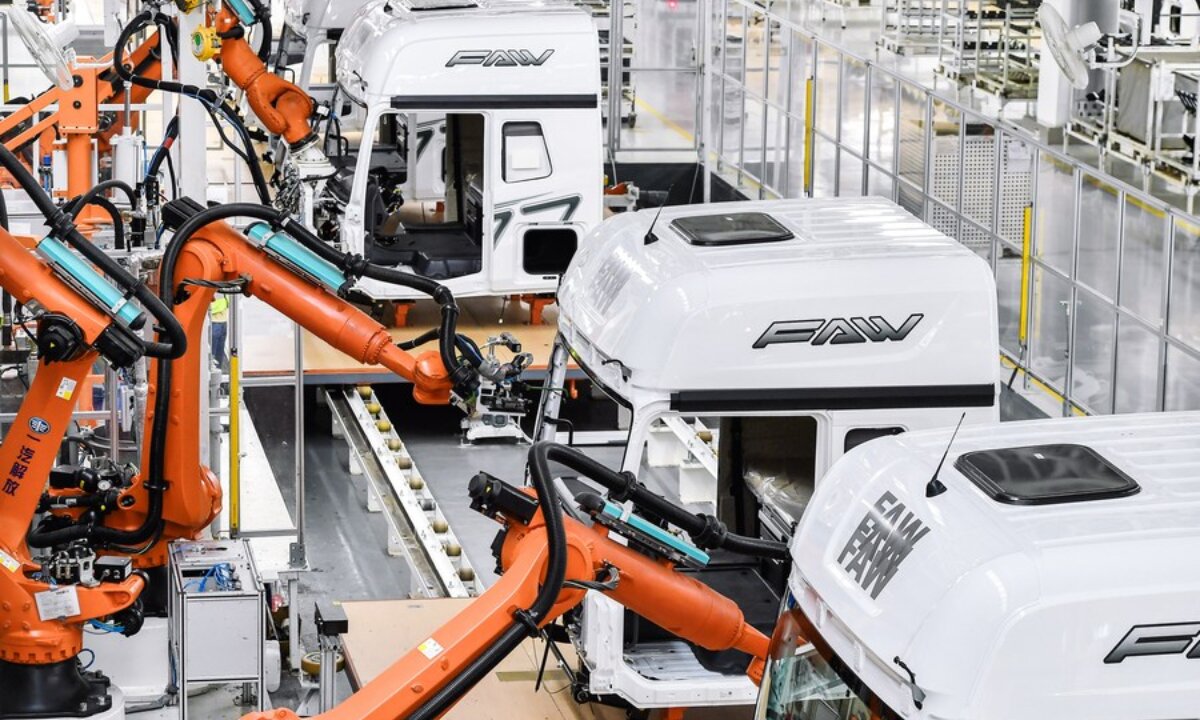Unleashing China’s Innovative Power: Transforming Global Collaboration with Quality Productive Forces
The phrase “new quality productive forces” is now at the core of China’s development. For the second consecutive year, this vision has been prominently featured in China’s government work report, showcasing its significant impact across the nation. From state-of-the-art robotics to sustainable energy solutions, China is redefining innovation in the 21st century.
During the recent Two Sessions—the annual gatherings of China’s National People’s Congress and the Chinese People’s Political Consultative Conference—leaders underscored that technological and industrial innovation is fundamental to developing these new quality productive forces. This transformative vision is already reshaping industries and creating fresh opportunities both within China and on the global stage.
Beyond DeepSeek: A Broader Horizon of Innovation
While China’s open-source AI model, DeepSeek, has attracted global attention, the nation’s innovation landscape extends far beyond artificial intelligence. For instance, in Wuhan, the largest city in central China, autonomous suspended monorails are revolutionizing public transport, seamlessly integrating with modern urban design. In Jinan, capital of Shandong Province, “lights-out” factories showcase robotic arms executing laser-precise welding in complete darkness, enhancing energy efficiency while maximizing productivity. These are not mere prototypes; they are live demonstrations of high-tech industrial transformation.
China’s vibrant innovative capabilities are paving the way for a more intelligent future, set to revolutionize sectors such as transportation, manufacturing, and disaster response.
Future-Proofing Progress: Industries of Tomorrow
Industries of the future are designed to anticipate developments in the years to come. This year’s government work report emphasizes advanced fields such as:
- Biomanufacturing
- Quantum Technology
- Embodied AI
- 6G Technology
Among these, the concept of embodied AI stands out. Unlike traditional AI, which operates solely on data and algorithms, embodied intelligence interacts with and perceives the real world through physical entities like robots. Imagine robots like Xiaoxing MAX scaling the Great Wall or the PM01 prototype executing gravity-defying flips. These physical embodiments promise breakthroughs in diverse fields, from precision surgery to hazardous rescue missions, effectively bridging the gap between digital intelligence and real-world applications.
Revamping Traditional Industries
China’s innovation wave is not only generating new sectors; it’s also revitalizing traditional industries. The integration of digital technologies in agriculture, manufacturing, and services has amplified efficiency, conserved resources, and improved the quality of life for citizens. A prime example is China’s high-speed railway system.
When the world’s first railway track was established 200 years ago, its creators could hardly foresee that one day a high-speed train from China would travel at speeds exceeding 400 km/h. The CR450 has achieved a test speed of 450 km/h, positioning it as potentially the fastest high-speed train upon its service launch.
This leap forward encompasses more than just speed; it represents enhanced energy efficiency, advanced safety features, and intelligent control systems. The incorporation of drag-reducing designs, innovative materials, and smart driving systems not only lowers energy consumption but also ensures smoother and more intelligent operations. The CR450 is poised to redefine rail transport, transforming how people travel and establishing new industry standards.
New Quality Productive Forces: A Global Opportunity
China’s innovative industrial progress is not only reshaping its own economy; it is also fostering global collaborations that redefine the meaning of progress. For example, when Shenzhen’s biotech expertise collaborates with Milan’s fashion innovation, or when Indian data labs team up with Chinese AI firms, the outcome is a fusion of ideas that benefits all involved.
In the realm of green technology, China’s battery leader, CATL, has partnered with European automakers to develop pioneering batteries. This partnership has not only lowered the cost of electric vehicles but has also accelerated the global shift towards sustainable energy, with over 1 million EVs currently powered by their advanced technology. Moreover, DeepSeek’s open-source AI is enabling farmers in developing nations to predict locust swarms months in advance using smartphone algorithms, effectively bridging technological divides with life-changing precision.
A Shared Future of Innovation
As China continues to innovate, the potential for global collaboration expands tremendously. In an era characterized by climate challenges and economic uncertainties, China’s dedication to high-quality development and open collaboration serves as a beacon of hope. By embracing new quality productive forces, China is not only shaping its own future but also contributing to a more connected and sustainable world for everyone.
Through its commitment to openness and cutting-edge modernization, China is emerging as a global driver of development, creating unprecedented opportunities for collaboration in the digital age. The journey of new quality productive forces is just beginning, and its influence is expected to resonate far beyond China’s borders, inspiring a shared future of innovation and progress.
Yi Xin is a Beijing-based international affairs commentator.






